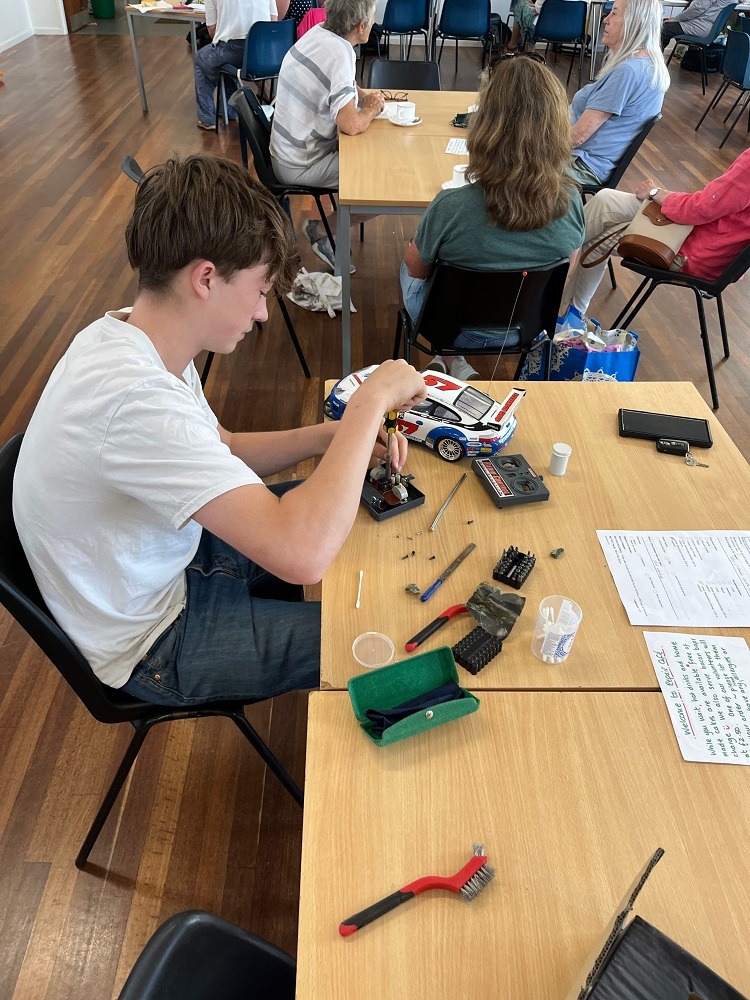“Supporting community approaches towards extending the life of existing products: resisting obsolescence by sharing knowledge, skills and creating alternative solutions where they didn’t seem to exist.” [The Restart Project]
.
It’s clear we need to reduce, reuse, repair, recycle – but how and where?
Sarah Allen of Exmouth has suggested we reuse stuff and we buy less stuff in her excellent blog. Other ideas covered in this blog include slow fashion and second-hand fashion, innovative materials to reuse waste and prioritising retrofitting existing buildings over demolition and rebuild.
Looking at some of the latest ideas out there, the New Civil Engineer has said recently that instead of build, build, build we should reduce, reuse, repair, refurbish, repurpose, recycle, recover – and a suggestion from Australia is that, whilst a solar panel recycling scheme would help reduce waste, please repair and reuse first!
So, recycling comes quite low down the list – whereas repairing and reusing is at the top.
This is what the UK Repair and Reuse Declaration is all about:
The UK is the second highest producer of electronic waste per capita in the world. Yet we are falling behind other countries in support for repair and reuse to tackle throwaway products. Repair and reuse are central to achieving a truly circular, less wasteful, economy. They help to tackle climate change and achieve our net zero ambition, reduce living costs for UK households and create green skilled jobs.
Community repair events are working towards this future, offering repair, building skills and boosting community cohesion in towns up and down the country. They demonstrate the public demand for repair services and skills, but so much more is required to meet this need.
This is an initiative from The Restart Project – and this is from a piece from earlier in the year where they point out that recycling won’t stop premature obsolescence – that’s a job for repair, refurbishment and reuse:
What is the goal of a true circular economy?
Depending on the actors involved, motivations can seem at times in contradiction with each other or lead to completely different objectives. Some argue that circularity is about ensuring that we recoup as many of the materials in the products we no longer use so that they can be used to manufacture new devices and appliances. Others concentrate on the importance of pushing ahead with legislation making future products more repairable as well as energy-efficient.
Fixing our relationship with electronics by resisting obsolescence
These are all important aspects, but what about all of the products that have already been manufactured and are still in use? For this, fixing our relationship with electronics is key, and this has been The Restart Project’s tagline since our inception.
From day one, at our very first Restart Party back in 2012, we’ve supported community approaches towards extending the life of existing products: resisting obsolescence by sharing knowledge, skills and creating alternative solutions where they didn’t seem to exist. Our primary focus is consumer products, small electricals and electronics.
And to illustrate what’s happening in our community, here’s a photo of a young member of the fixing team at the Sidmouth Repair Café from July this year:

With thanks to Angie Carney of the Sidmouth Repair Café.
…